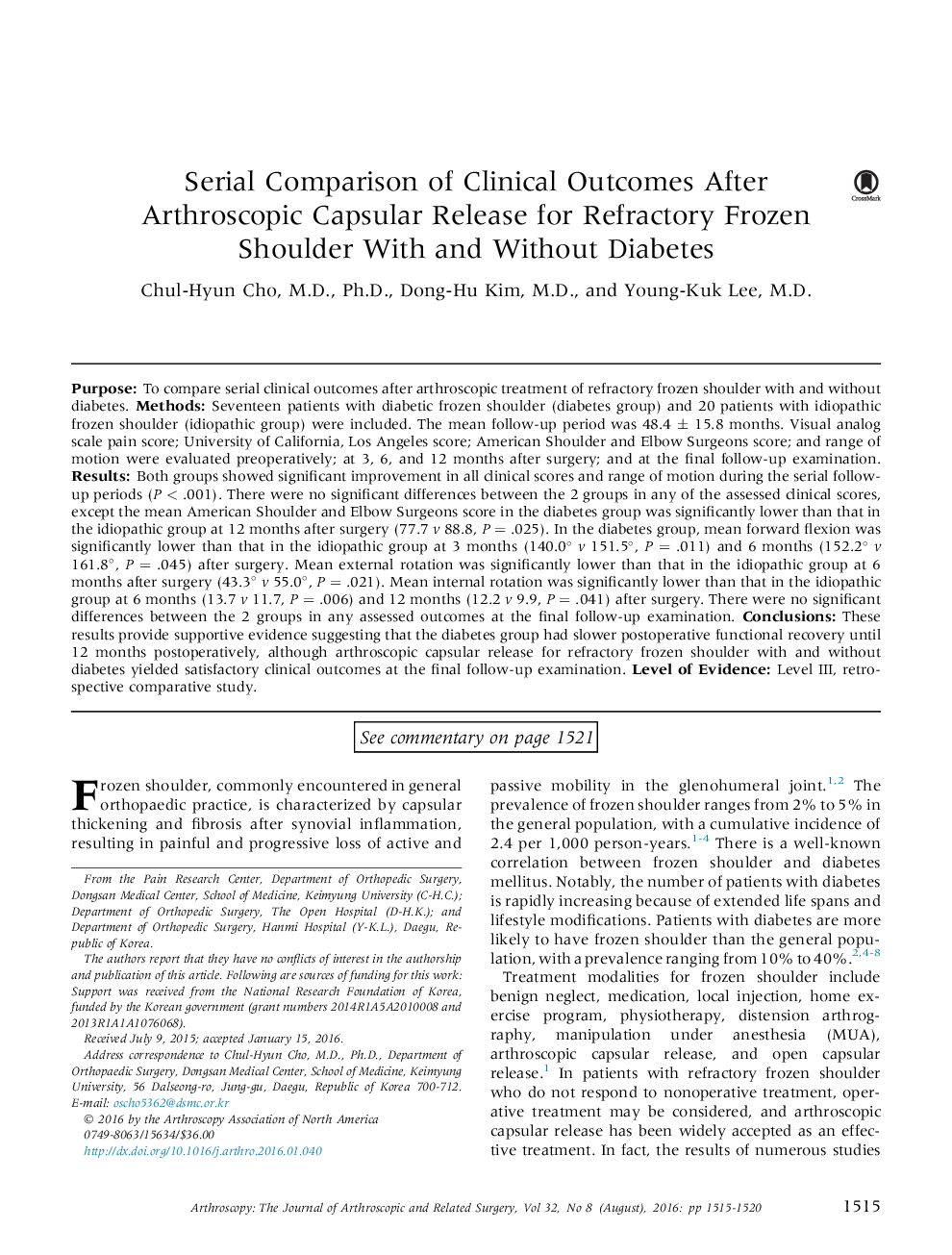| Article ID | Journal | Published Year | Pages | File Type |
|---|---|---|---|---|
| 4041783 | Arthroscopy: The Journal of Arthroscopic & Related Surgery | 2016 | 6 Pages |
PurposeTo compare serial clinical outcomes after arthroscopic treatment of refractory frozen shoulder with and without diabetes.MethodsSeventeen patients with diabetic frozen shoulder (diabetes group) and 20 patients with idiopathic frozen shoulder (idiopathic group) were included. The mean follow-up period was 48.4 ± 15.8 months. Visual analog scale pain score; University of California, Los Angeles score; American Shoulder and Elbow Surgeons score; and range of motion were evaluated preoperatively; at 3, 6, and 12 months after surgery; and at the final follow-up examination.ResultsBoth groups showed significant improvement in all clinical scores and range of motion during the serial follow-up periods (P < .001). There were no significant differences between the 2 groups in any of the assessed clinical scores, except the mean American Shoulder and Elbow Surgeons score in the diabetes group was significantly lower than that in the idiopathic group at 12 months after surgery (77.7 v 88.8, P = .025). In the diabetes group, mean forward flexion was significantly lower than that in the idiopathic group at 3 months (140.0° v 151.5°, P = .011) and 6 months (152.2° v 161.8°, P = .045) after surgery. Mean external rotation was significantly lower than that in the idiopathic group at 6 months after surgery (43.3° v 55.0°, P = .021). Mean internal rotation was significantly lower than that in the idiopathic group at 6 months (13.7 v 11.7, P = .006) and 12 months (12.2 v 9.9, P = .041) after surgery. There were no significant differences between the 2 groups in any assessed outcomes at the final follow-up examination.ConclusionsThese results provide supportive evidence suggesting that the diabetes group had slower postoperative functional recovery until 12 months postoperatively, although arthroscopic capsular release for refractory frozen shoulder with and without diabetes yielded satisfactory clinical outcomes at the final follow-up examination.Level of EvidenceLevel III, retrospective comparative study.
